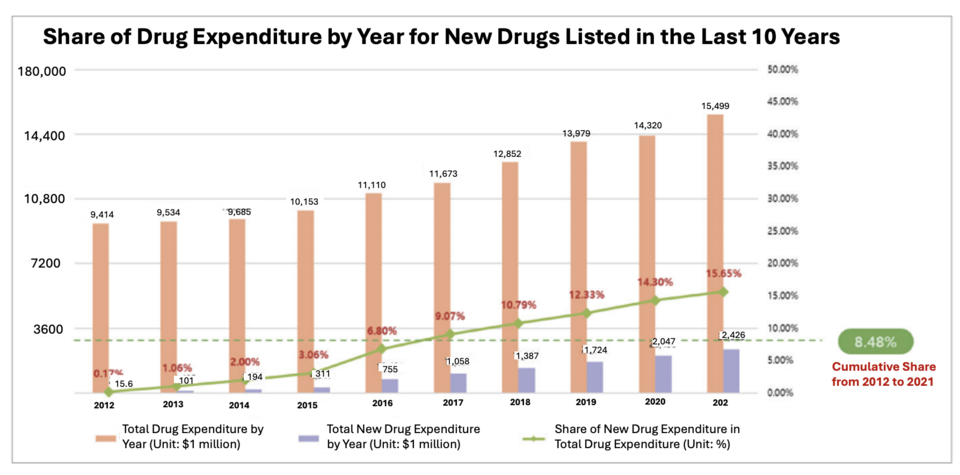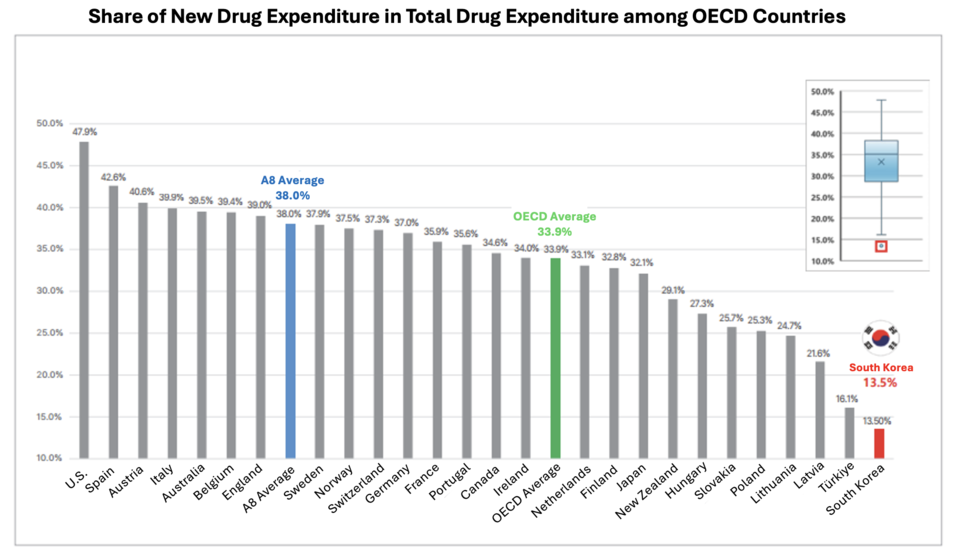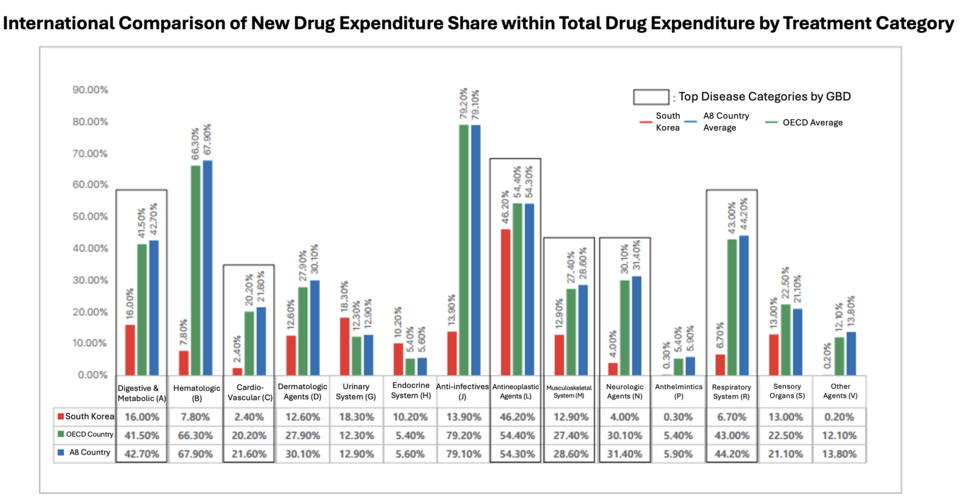Prioritize Coverage for High-Burden Diseases with Innovative New Drugs
Korea’s Spending on New Drugs: Is It Sustainable?
South Korea often garners attention for its economic resilience, ranking second among 35 OECD countries in managing inflation and economic indicators, according to The Economist. However, when it comes to healthcare spending, especially regarding access to new, innovative drugs, Korea's performance lags behind its economic success.

A recent study, Analysis and Rationalization of New Drug Expenditures in Korea, led by Professor Jong-Hyuk Lee from Chung-Ang University and sponsored by the Korea Research-based Pharma Industry Association (KRPIA), reveals that only 8.5% of Korea's drug expenditure over the past decade went towards new drugs, which comprised a mere 2.1% of total national medical costs. This translates to an average annual spend of about $4.4 million per new drug from a total drug expenditure of $118.2 billion.
Limited by health insurance policies that rely on cost-effectiveness assessments and risk-sharing agreements (RSAs), spending on drugs for critical illnesses such as cancer and rare diseases remains low—only 0.3% and 2.7% of total drug expenditure, respectively.

Further analysis of spending on new drugs for severe and rare diseases reveals that only 3.3% of the total drug expenditure is allocated to these treatments, highlighting the limited accessibility to innovative therapies for patients with serious and rare conditions in Korea.
Professor Lee highlighted that Korea’s fiscal impact from new drugs is considerably lower than anticipated. "The low ratio of spending on treatments for severe and rare diseases underscores the need to rethink the spending structure to boost patient access to vital therapies," he said.
New Drug Expenditure Accounts for 13.5% of Total Drug Costs – Lowest Among OECD Countries
A study by Professor Seung-Rae Yoo from Dongduk Women’s University analyzed Korea's expenditure on new drugs relative to disease burden and compared these findings internationally. The study reviewed new drug listings between 2017 and 2022, assessing costs across major treatment categories and benchmarks with other OECD nations.
While Korea's new drug expenditure amounted to 13.5% of its total drug costs over the six-year period, this was the lowest among OECD countries. By comparison, new drug spending in high-burden therapeutic areas in the U.S., U.K., and other A8 countries was significantly higher, reflecting a global trend of prioritizing high-burden diseases such as cancer, cardiovascular, and neurological disorders.

In high-mortality disease categories, Korea's new drug expenditure was considerably lower, with only 2.4% for cardiovascular, 4.0% for neurological, 6.7% for respiratory, and 16.0% for digestive-metabolic treatments, contrasting with much higher rates in other OECD nations.
Progress in New Drug Listing, Access to Therapies Still Limited
Since 2014, the government has implemented policies like the Risk-Sharing Agreement (RSA) system and expanded economic evaluation exemptions. These measures have aimed to enhance patient access to new drugs, particularly for life-altering conditions. However, the impact remains modest, with RSA-covered drugs making up just 3.8% of total drug costs, and orphan drugs only 2.5%.

Professor Yoo emphasized the need to extend RSA programs and exemptions to high-burden conditions that impact quality of life, stating, "To bridge the gap in new drug spending compared to other nations, prioritizing reimbursements for innovative therapies is essential."


